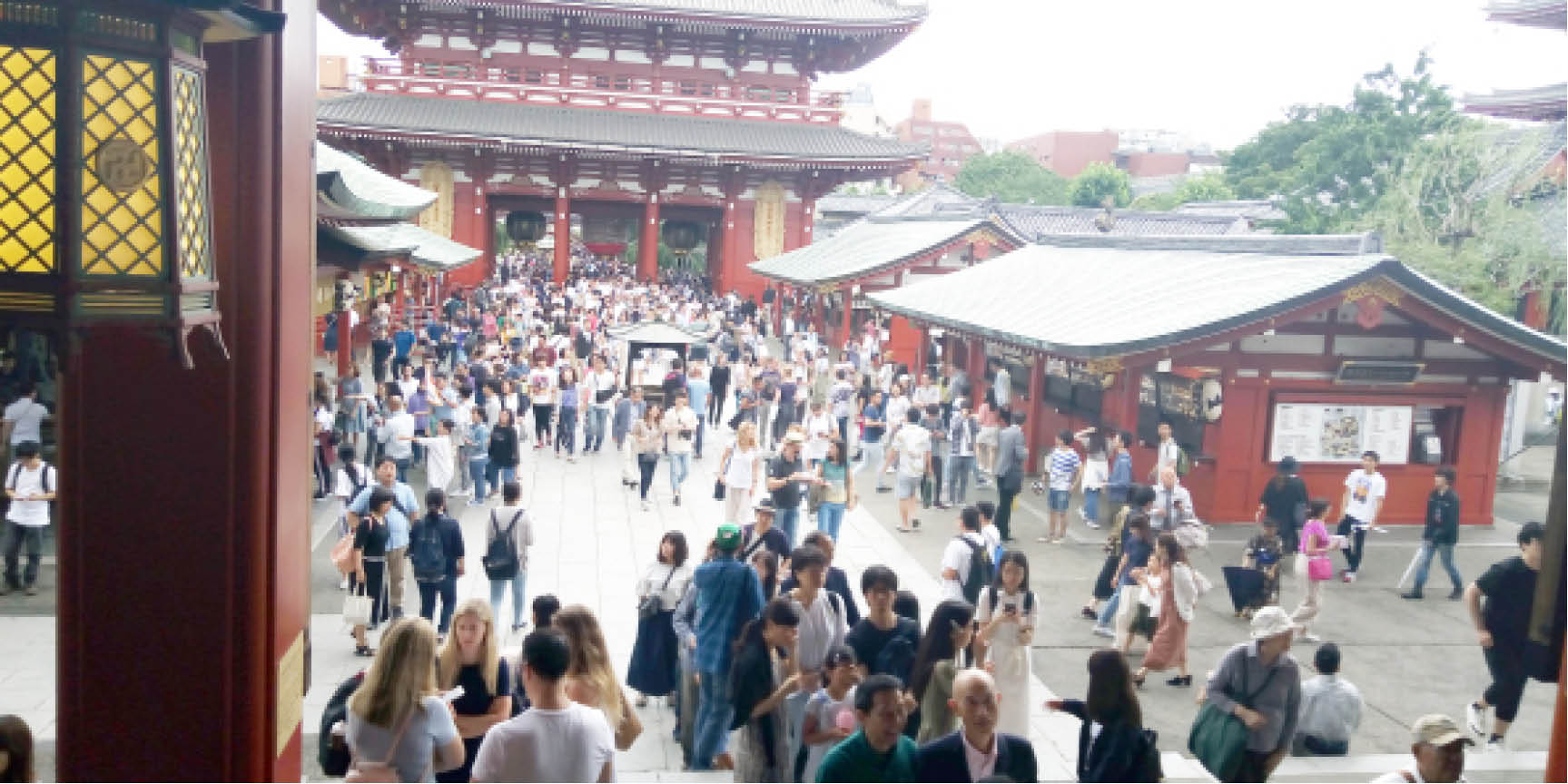Every year, thousands of people from across the world visit the Sensoji Temple in Tokyo, Japan, seeking fortune, health and spiritual understanding.
The stream of visitors seemed unending along the stretch of the walkway from the Kaminarimon Gate (or Thunder Gate) with a giant hanging lantern, to the inner part of the Sensoji Buddhist Temple of Asakusa in Tokyo. The lantern was painted red and black. It is also the insignia of Asakusa.
The Kaminarimon Gate leads to the Horomon Gate (or Treasure House Gate) of the inner arena and the measured steps lead into the worship area. Both sides of the 250-metre pavement from Kaminarimon to Horomon gates are lined with many shops stocked with a variety of gift items as visitors sampled souvenirs and traders surged to sell. It is the popular Nakamise Shopping Street. Gift items ranged from modern accessories to traditional Japanese personal and household utensils. Watches, assorted jewelry, kitchen utensils, handbags, colourful umbrellas, wristbands, T-shirts, hats for both sexes among others stirred the visitor in the eye. There were many hand-made goods too, well designed hand fans of all sizes, swords with good carvings, woodblock prints, replicas of Buddhist scrolls and even facsimiles of ancient Japanese weapons.
Kimonos and other traditional attires were also on sale as well as raffia shoes of Japan’s past. Of course, the path was also lined with many fast food stands serving traditional Japanese and western meals.
Just as many people were concerned with buying gift items, others were enmeshed by the allure of the ancient temple that is said to have been first built in 628 AD and adjudged to be the oldest holy place in Tokyo. But, along the ages, the temple underwent some reconstruction, especially after its destruction during World War II, when Tokyo was bombed and at a time, it was also gutted by fire. It was gathered that the present Kaminarimon Gate was dedicated in 1960.
Many others were concerned with taking photographs at every turn along the ancient colourful path leading to the inner part of the temple shaped in a typical oriental-styled pagoda tower. By the side left side of the arena towards the chambers is a five tower building.
Within the temple, many visitors, especially from outside Japan, wanted to experience total Japanese life-style by wearing Kimonos and going through the process of worship where it is believed that wishes are answered and health challenges are solved.
Those with health issues bought incenses at the temple for 100 yen or more, burned and inhaled them at a platform. By this, health challenges of any kind were believed healed. Those who wished something washed their hands and faces at the water fountain at the base of the steps before going inside the temple. A coin was tossed into a wooden compartment and a wish was mentioned, facing the iron demarcation where a statue of the Buddha was kept. The roomy inner space was lit mainly with bronze lights with only the priests allowed access.
There was also o-mikuji, where visitors could consult an oracle for a token amount, for answers to disturbing personal issues. Labeled sticks were chosen from containers and answers were derived from drawers.
A tour guide, Atsushi Takahashi, told Daily Trust Saturday that yearly, many people visit from across the world for these rituals, believing to have their concerns addressed.
Many spiritual events are held in the temple, among them the annual Sanja Matsuri in May, Asakusa Samba Carnival in August and the Hagoita-ichi (Hagoita Market) when wooden paddles for the traditional game of Hanetsuki are sold. According to a tourist information booklet made available to Daily Trust Saturday, the Sensoji spiritual temple receives over 30 million visitors annually.
A shop owner, Miyako Yoshida, told Daily Trust Saturday that sales are more in summer when most schools are on holidays and there is an influx of tourists, especially from other Asian countries. She said most sales are in personal items and handicraft.
Asakusa also tries to maintain some of its traditions. On the bank of the nearby Sumida River, a Ninja welcomed visitors with martial arts displays and iron-made chariots re-enacted the transportation system of the ancient past. On the whole, Sensoji and indeed, Asakusa are a blend of the old and modern, spiritual and secular, and Japanese and western. And at every turn, there is always something to cherish.

 Join Daily Trust WhatsApp Community For Quick Access To News and Happenings Around You.
Join Daily Trust WhatsApp Community For Quick Access To News and Happenings Around You.


